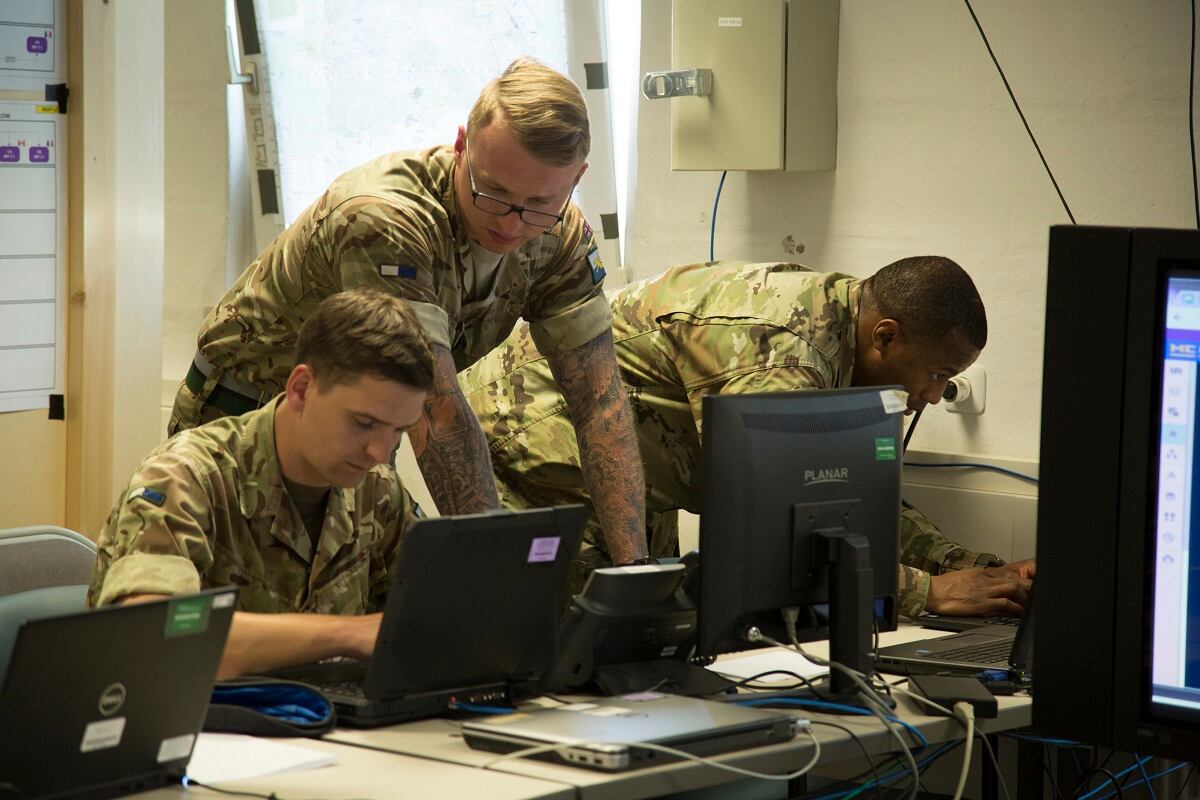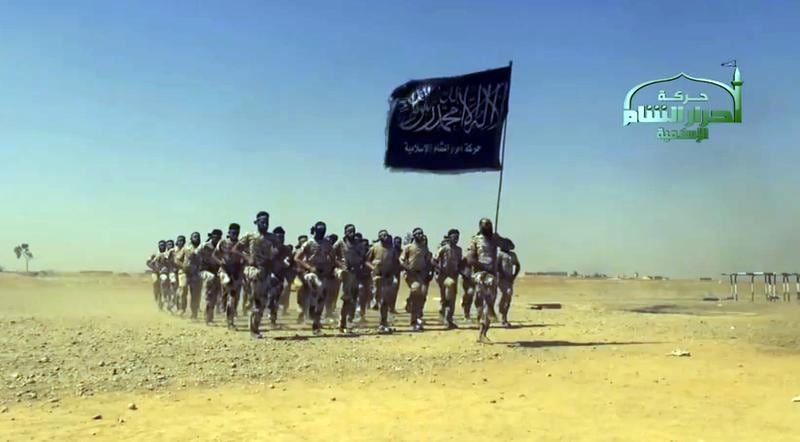WASHINGTON — Investing in information warfare capabilities is as important as updating military platforms, according to Col. Myles Caggins, the director of public affairs for the U.S. Army’s III Corps.
“Senior leaders need to embrace that public-communication warfare is important, and then have the policies that provide the resources to equip our words warriors and our soldiers with what they need,” he said during a virtual presentation Oct. 15 as part of the Association of the U.S. Army’s annual meeting.
To quickly thwart and defeat adversarial messages and campaigns in the information space — which includes social media and, more broadly, the internet — the Defense Department must invest in its information professionals and their tools just as it does in updating its tanks and planes, the officer argued.
Caggins recently concluded a tour in the Middle East serving as the spokesman for the global coalition combating the Islamic Statet group in Iraq and Syria. At the AUSA event, he shared lessons learned about fighting in the information environment, which includes a host of both state and nonstate actors.
RELATED

A video from his presentation pointed to Russia, which is involved in the Syrian conflict, as an example of a country that conducts maneuvers in the physical space to achieve goals in the information environment. He cited Russia’s seemingly adept assault on a U.S. base in Syria, which was abandoned the day prior. The assault was filmed and broadcast.
On the modern internet, messages — true or false — can rapidly spread across the globe, and once a narrative is established, countering it can be a challenge. U.S. officials have described how American adversaries are winning the propaganda battle for hearts and minds by making false or misleading claims, such as large-scale civilian casualties during U.S. airstrikes. By the time the U.S. military conducts a full-scale assessment of these incidents, the narrative has taken hold.
The video from Caggins' presentation also said the coalition fighting ISIS competed in this dynamic information environment in several ways: It created a mindset to domination the information environment with weaponized truth; it used an audience-centric approach to reach the people of Iraq and northeastern Syria in their natural language and on regional networks; it built relationships with representatives from partner forces and with regional journalists to fight misinformation; and it talked to the public though the press and embedded media.

While the U.S. military has struggled adapting to this fast-paced, modern information space, one of the tactics that emerged from its efforts involves disclosing adversarial activity.
Caggins said in his experience, social media is the fastest way to distribute messages, but the most effective route to the general public is through the press.
“As the tweeter in chief for the coalition, I had around 100,000 followers who were built up over the years. It would reach regional audiences, but most importantly I was trying to reach the journalists who would follow me so they could share the information, reach their audiences, hundreds of millions, hypothetically, billions of people from those tweets,” he said.
As the U.S. military reorganizes and reorients to fight the information war, top officials have talked at length about the importance public affairs plays in the landscape aside other military capabilities like cyber, electronic warfare and intelligence.
Caggins agrees that public affairs activities should be more encouraged.
The Marine Corps, in its operating concepts for the information space, has purposely eschewed the term “information warfare,” opting for operations in the information environment. This is because the service wants to think more about the strategic communications aspect of it.
Caggins explained that soldiers on a patrol with cameras are essentially sensors, and that they should be allowed to post what they’re seeing — after a quick public affairs sanitation for operational security — because adversaries like Russia film everything they do.
“The Russians and other adversaries are filming everything that they do because they can’t afford some of the big-ticket programs and military items that we have. They know that information is much more influential often than large-scale military operations, kinetic activity, and they frequently don’t even have the capability to match us,” he said.
Caggins, also said the military has to give everyday foot soldiers and especially public affairs personnel the tools to upload content faster to compete in this environment.
“I’d like it if we, as an institution, as the government, formally amplified some of the social media that’s being done by our service members,” he said, adding that there should be more trust so military members can tell their stories.
He contrasted this approach with that of what the military traditionally does: spend billions of dollars on platforms and conduct operations to deter actions. “But how about we do simple things like just taking pictures of what we do and, more importantly, having our own service members and civilians tell their own story,” Caggins said.
Providing soldiers with the right camera gear and amplifying their messages is far less costly, he argued, and that can have a large impact. For example, Caggins said, following the Iranian missile attacks on U.S. bases in Iraq in January, combat camera soldiers took pictures of the damage that made it to Washington, impacting decisions made by top national leadership.
“Having a combat camera soldier there at Al Asad [Air Base] — even in a period where we’re reducing the number of U.S. troops on the ground — was essential,” he said.
The next step, according to Caggins, would be better Wi-Fi capabilities so troops can more quickly upload images, as there are areas where signals are limited or using the internet requires forces to pay out of pocket.
“We need to enable our words warriors to fight and win on the battlefield. No different than every few years the military will relook the rifles that our soldiers have, the optics that they have, will upgrade our tanks and helicopters,” Caggins said. “They need to be able to upload imagery anywhere in the world.”
Mark Pomerleau is a reporter for C4ISRNET, covering information warfare and cyberspace.






